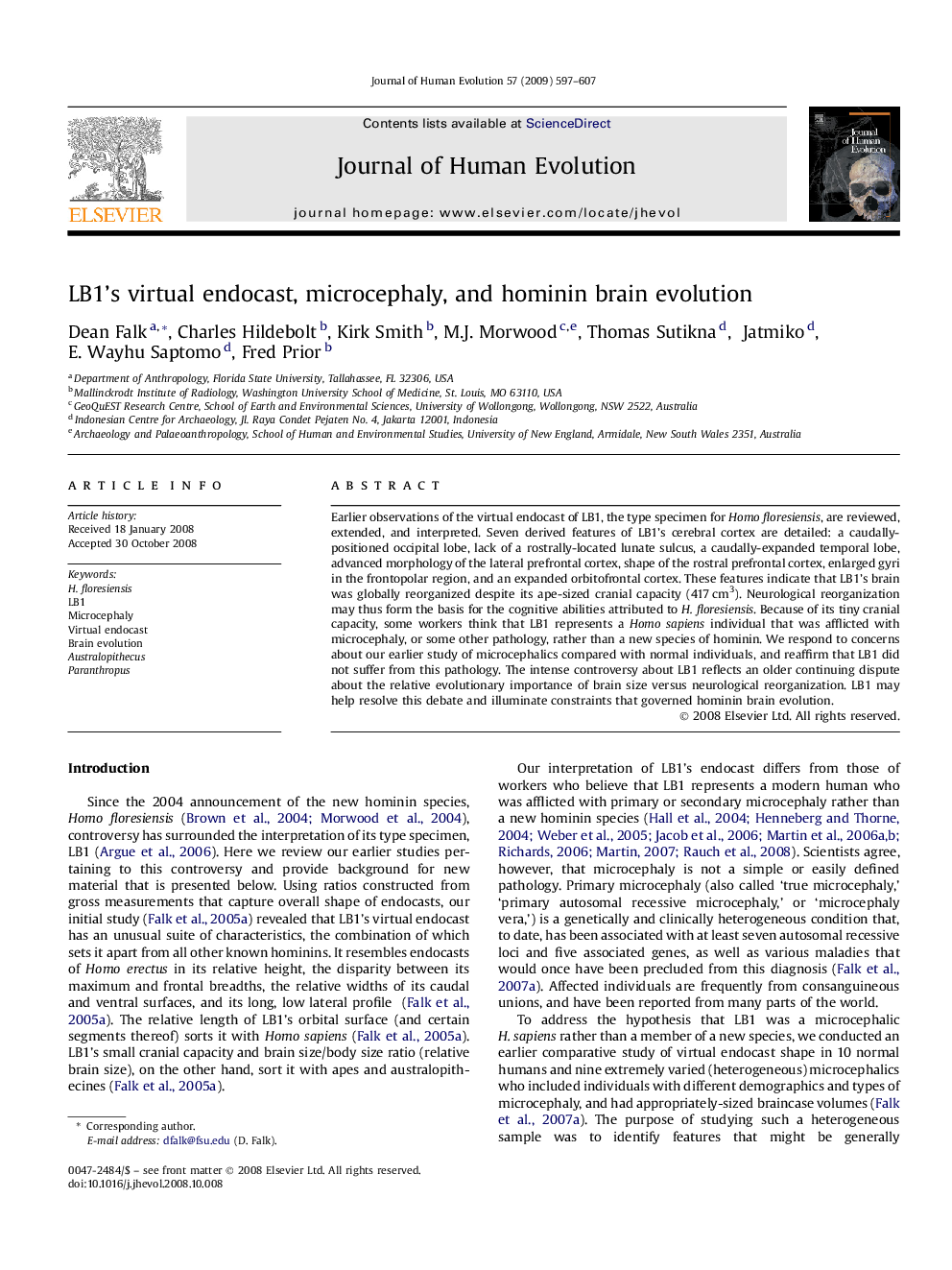| Article ID | Journal | Published Year | Pages | File Type |
|---|---|---|---|---|
| 4556991 | Journal of Human Evolution | 2009 | 11 Pages |
Earlier observations of the virtual endocast of LB1, the type specimen for Homo floresiensis, are reviewed, extended, and interpreted. Seven derived features of LB1's cerebral cortex are detailed: a caudally-positioned occipital lobe, lack of a rostrally-located lunate sulcus, a caudally-expanded temporal lobe, advanced morphology of the lateral prefrontal cortex, shape of the rostral prefrontal cortex, enlarged gyri in the frontopolar region, and an expanded orbitofrontal cortex. These features indicate that LB1's brain was globally reorganized despite its ape-sized cranial capacity (417 cm3). Neurological reorganization may thus form the basis for the cognitive abilities attributed to H. floresiensis. Because of its tiny cranial capacity, some workers think that LB1 represents a Homo sapiens individual that was afflicted with microcephaly, or some other pathology, rather than a new species of hominin. We respond to concerns about our earlier study of microcephalics compared with normal individuals, and reaffirm that LB1 did not suffer from this pathology. The intense controversy about LB1 reflects an older continuing dispute about the relative evolutionary importance of brain size versus neurological reorganization. LB1 may help resolve this debate and illuminate constraints that governed hominin brain evolution.
